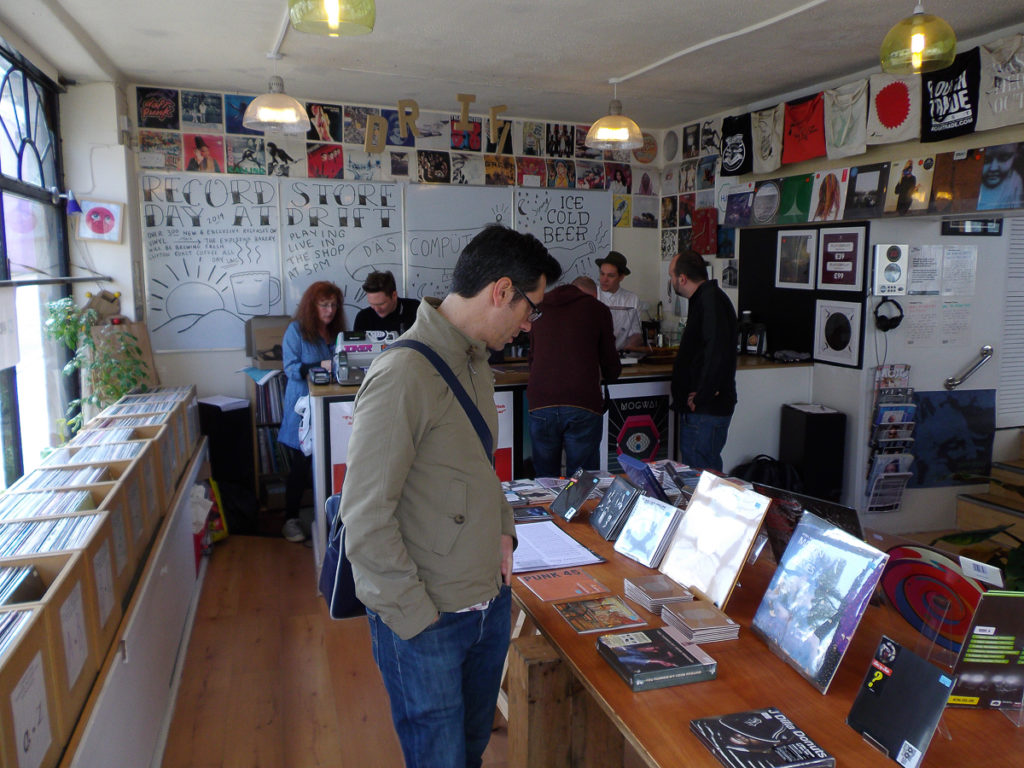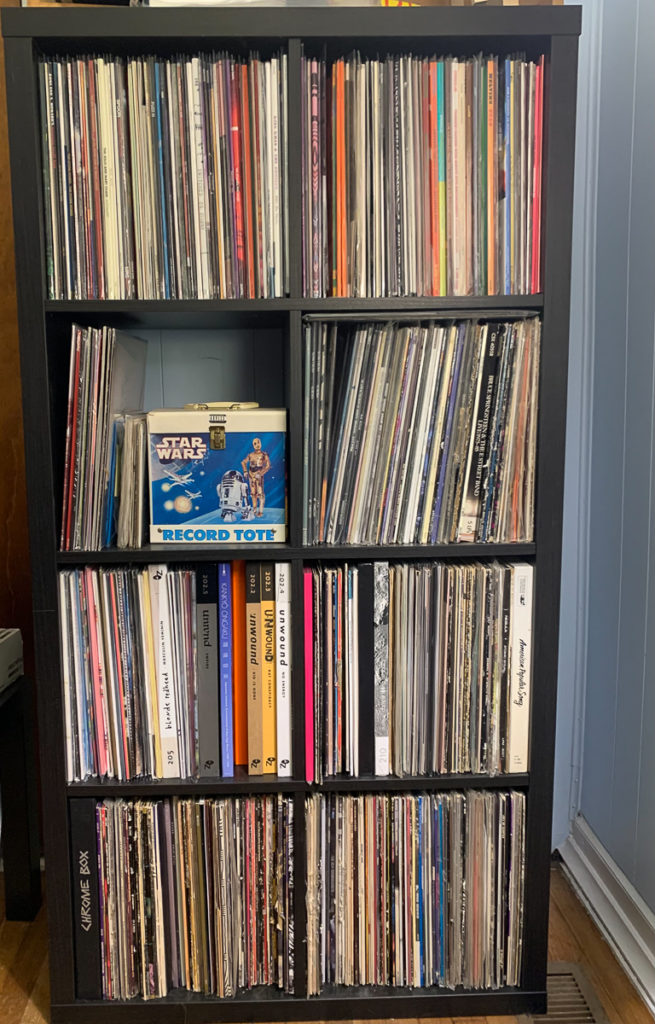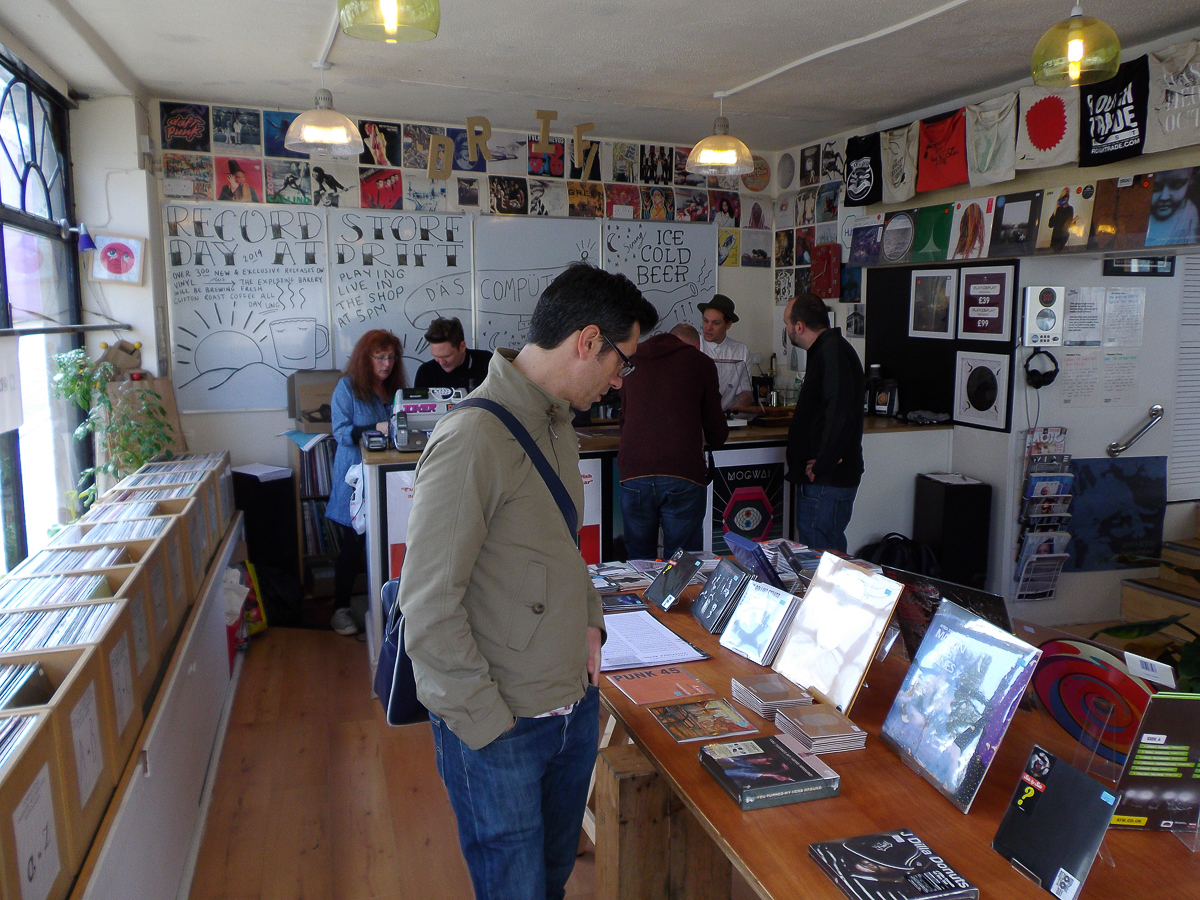Record Store Day, celebrated on June 12, was established in 2007 to support independent and small business record stores, and it has become a highlight for the record-buying public. The height of record store popularity ranged from the 1950s to the 1980s, but wherever you purchase your music these days, it’s obvious that vinyl is having a resurgence in popularity. Taylor Swift recently broke a modern era record for vinyl sales in a single week. So, in celebration of Record Store Day, here’s a brief look at the history of recording records.

Record Store Day 2014 at Drift Records in Totnes, United Kingdon. Photo by Sophie means wisdom, Wikimedia Commons
The first audio recording and playback machine was invented by Thomas Edison. It worked by carving the audio into a piece of metal foil wrapped around a cylinder. The original purpose of this invention, called the phonograph, was not for listening to music for pleasure but as a machine to record short notes for business meetings. Edison actually never thought of his invention as a means for music or entertainment, and these early cylinders certainly weren’t viewed as items for posterity – the recordings could only be played back a few times before they were too degraded to hear. Later, through the work of other inventors, cylinders began to be coated in wax, which provided a slightly better sound with more playbacks.
Emile Berliner improved upon this invention by converting the bulky and hard-to-store cylinders into flat discs. With the invention of these more durable discs, listening finally started to take the shape we now know and love. Berliner’s hand-cranked invention to listen to these discs was dubbed the gramophone, which is where the Grammy Awards get their name and their trophy gets its shape in honor of this piece of music-listening history.
Technology is always a story of constant evolution and, usually, improvement. Eldridge Johnson, a machinist who worked with Berliner to improve the gramophone, founded the Victor Talking Machine Company and began making and his own version of the playback machine, as well as producing 78 records that were made with a new and improved technique resulting in a higher quality sound. With changes in the recording technology – including the electric microphone and the electric amplifier – recorded music became more and more popular from the 1920s. And technology continued to develop over the years with a whole host of different record playing machines and changes in the format of records – from the early 78s to the later 33 1/3 and 45rpm records. The museum’s collections hold a multitude of the older 78s, while 33 1/3s, or LPs, are most widely sold now.

Left: A small Victrola phonograph on display at the museum. Top right: A cylinder player and cylinders. Botom right: A modern record player with a 45rpm record on it. Credits: © Birthplace of Country Music; photographer: Neil Staples; Photo by Petit Louis, Wikimedia Commons; Photo by Alan Levine, Wikimedia Commons
The invention of magnetic tape offered a clearer sound and portable listening, and record technology faded into the background, but the appeal of listening via records never quite died. A surge in popularity of record listening in the 1960s ushered in a golden age of records that lasted through the 1970s. And once again innovation came to the fore, influencing musical styles and techniques – for instance, in the 1980s and 1990s, hip hop artists created new and unique tracks from the sounds that were on the records using mixers and samplers.
In the past few years, a new wave in the popularity of vinyl has increased the appeal of owning and listening to music on records. Popular artists are releasing their albums on vinyl to be sold in record stores, big and small, as well as box stores with growing shelf space for these records. Record players are easy to find at affordable prices, and some of these modern players now offer multiple listening formats including cassette players, CD players, AUX jacks, and Bluetooth connection. This lets you listen to your music in just about any format you want.
Despite vinyl records not being as convenient as the common digital technology, there is something really special about owning the physical song etched into a disc and building a collection of your favorite albums – and it’s not just about the record itself, but also about the cover artwork and the liner notes. And so, embrace vinyl once again, and celebrate this Record Store Day by going out to your nearest record store and treating yourself to an addition to your collection – or starting one! Because even if it’s the first record you’ve ever bought or your 101st, there’s nothing quite like the first play of a new record.

Museum staff member Scotty Almany is an avid record collector. © Scotty Almany


